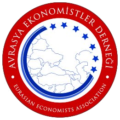
International Conference on Eurasian Economies
29-31 August 2016 – Kaposvár, HUNGARY
Paper detail
Paper ID : 1666
Status : Paper published
Language : Turkish
Topic : Macroeconomics
Presenter: Assoc. Prof. Dr. Mustafa Batuhan Tufaner
Session : 3D Finans III
The Effect of the Interest Rate Corridor Implementation to Central Bank Policies
Faiz Koridoru Uygulamasının Merkez Bankası Politikalarına Etkisi
- Assoc. Prof. Dr. Mustafa Batuhan Tufaner (Istanbul Beykent University, Türkiye)
- Prof. Dr. Kamil Uslu (Doğuş University, Türkiye)
- Prof. Dr. İlyas Sözen (Dokuz Eylül University, Türkiye)
Abstract
Central banks fulfill missions like financing governments, contributing the improvement of the financial market and implement monetary policy. Because of these important functions, instruments of the central bank has become a subject of ongoing debate over the years. The Central Bank's monetary policies instruments are important in terms of achieving the set macroeconomics targets. In recent years to become a major focus of attention of the interest rate corridor instrument has led to examine the structure of the central banks. The interest rate corridor primarily, provides flexibility advantages through interest rate to the central banks. The opinion that the central banks which have a flexible structure are more successful on ensuring the price stability and implementing macro policies with evading the political effects became stronger. In this context, in this study to examine the contributions of a flexible central bank to price stability and financial stability. In this bulletin different policy instruments of central banks are compared and critically assessed various determinants of central bank flexibility. In addition, comparing of the legislation of major central banks and various interest rate corridor implementations are examined.
JEL codes: E43, E52, E58
Tufaner, Mustafa Batuhan, Uslu, Kamil, Sözen, İlyas (2016). "The Effect of the Interest Rate Corridor Implementation to Central Bank Policies" in Proceedings of International Conference of Eurasian Economies 2016, pp.658-666, Kaposvár, HUNGARY.
DOI: https://doi.org/10.36880/C07.01666





